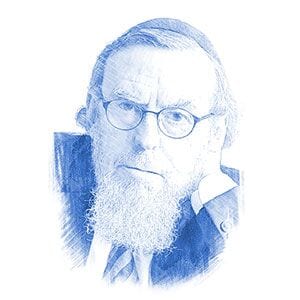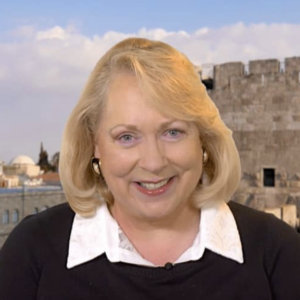One of the most remarkable aspects of Orthodox Halacha is that it is almost an open market. Any person with halachic knowledge can write and state whatever they believe is true, knowing full well that others could refute their arguments. They must surely have all the relevant sources at their fingertips, but they are completely free to use the information in a creative way, so long as they adhere to the masoret, an unwritten and undefined tradition going back thousands of years. Some will view the masoret as a minimal and almost fundamentalist observance, and others will view it as a maximal and highly flexible tradition, which allows for much innovation.
Their common ground is their view of this tradition as a river that flows through an often rocky terrain, with many unexpected turns, but never dries up. These arbiters would never forsake the river. Some will subtly alter its course, pushing against the river’s shore in an attempt to widen it, while others would never dare. But not one of them would suggest creating an altogether new river. If that were to happen, all would be lost.
Most of these actions, or lack of them, are not deliberately planned but are largely unconscious reactions, which the halachic arbiter is not even aware of. There is a deep trust in this process while nobody really knows what the process involves. There’s no agenda, and that’s exactly why it remains alive and successful.
It is also why in Orthodox Judaism there are no “Halacha committees,” as we find in Conservative Judaism. While in the olden days there was a Sanhedrin — a supreme rabbinical court that was given full authority over the functioning of Jewish law in the Jewish state — it deliberately left many loopholes and lacunae. And rulings had to then be made by local rabbinical courts and individual rabbis. Once the old Jewish state ceased to exist, the Sanhedrin was dissolved. This may quite well have been a blessing, since an overall legal body would have become an obstacle in a scattered Jewish world that could only survive if the theory of “halachic chaos” would take the upper hand.
 In modern times, the great halachic authorities decide major cases independently. They are not voted in or appointed by a commission, but they spontaneously become accepted as the main arbiters, with no official declaration made. It is the circumstances, which appear in a chaotic way, that suddenly bring a halachic authority prominence. It may be that others are better qualified to take on the task, but they never make it because the community looks the other way for reasons it may never even know. It might be the arbiter’s personality, a specific trait, or just being in the right place at the right time that makes them stand out. It could be that one unusual and daring ruling does the trick, and it is probably true to say that the halachic arbiters themselves are taken by surprise to suddenly be at the center of the halachic community. It is no doubt absolutely essential that they have all Talmudic and halachic literature at their fingertips, but that is not what makes them prominent. They must develop a creative, versatile, and somewhat chaotic mind, able to make connections that no one has ever seen or thought about, and willing to come up with unprecedented ideas. Unconscious and turbulent forces must be at work. If arbiters have a wealth of encyclopedic knowledge but are unable to develop it, they cannot fill the role of posek (halachic authority). They must also be flexible enough to allow for the unpredictable to enter the halachic conversation.
In modern times, the great halachic authorities decide major cases independently. They are not voted in or appointed by a commission, but they spontaneously become accepted as the main arbiters, with no official declaration made. It is the circumstances, which appear in a chaotic way, that suddenly bring a halachic authority prominence. It may be that others are better qualified to take on the task, but they never make it because the community looks the other way for reasons it may never even know. It might be the arbiter’s personality, a specific trait, or just being in the right place at the right time that makes them stand out. It could be that one unusual and daring ruling does the trick, and it is probably true to say that the halachic arbiters themselves are taken by surprise to suddenly be at the center of the halachic community. It is no doubt absolutely essential that they have all Talmudic and halachic literature at their fingertips, but that is not what makes them prominent. They must develop a creative, versatile, and somewhat chaotic mind, able to make connections that no one has ever seen or thought about, and willing to come up with unprecedented ideas. Unconscious and turbulent forces must be at work. If arbiters have a wealth of encyclopedic knowledge but are unable to develop it, they cannot fill the role of posek (halachic authority). They must also be flexible enough to allow for the unpredictable to enter the halachic conversation.
Not only do we see a considerable amount of chaotic halachic literature, published by numerous authorities, which seems to lack consistency and order, but we may even find contradictions in the various writings of one halachist. This doesn’t mean that the writer lacks a particular line of thought and some basic principles; it just means that within these norms almost everything is an open market.
I believe this is the reason why the Conservative movement, with all its good intentions and great scholarship, was unable to grasp the imagination of many halachic authorities. It is not the lack of knowledge, but rather the over-systematization that is responsible for this. Once there is too much of a unified weltanschauung and agenda, Halacha loses its vitality. The multitude of attitudes, worldviews, chaotic thinking and sometime wild ideas, through which the greatest halachic authorities freely expressed their opinions, is what kept the Orthodox halachic world alive. In some sense, and even almost paradoxically, Orthodox Halacha is less fundamentalist than Halacha in other movements within Judaism.
None of this should surprise anyone. When looking into the Talmud, which is the very source of Halacha, we find a range of opinions so wide, and often radical, that it is almost impossible to find any sense of order. There’s a reason why the Talmud is compared to a sea in which storms create unpredictable waves and turbulence. The revealed beauty of this natural phenomenon is what attracts people to gaze at the sea for hours on end. It reflects their inner world, which thrives only in the presence of tension, paradox and chaos.
This may be related to another phenomenon in authentic Orthodox Judaism. Before Maimonides, Judaism did not really have a theology. There were no universal, accepted beliefs that were codified or dogmatized. While Judaism certainly has beliefs, they are flexible and open to interpretation. Belief in God and the divinity of the Torah, for example, are fundamental. But the myriad interpretations of these beliefs are so at variance with one another that we don’t see any real consistency. However, once Maimonides appeared on the scene, in the eleventh century, and categorized these beliefs into clear-cut statements through his Thirteen Principles of Faith, Judaism became systematized and dogmatized, losing one of its greatest assets: a religion without a fixed theology.
It is surprising that Maimonides, who was perhaps the greatest of all Jewish philosophers, was the very same man who codified and straight-jacketed Jewish law and beliefs in ways that are completely unprecedented in classical Judaism. It’s even more astonishing when we realize that this was done by an independent thinker who went his own way and seemed to have cared little about what his opponents thought of him or his ideas.
Maimonides also left us his magnum opus, The Guide for the Perplexed, which was his major and ongoing contribution, not only to Jewish philosophy but to general philosophy as well. It is surprising that this book, written by one of the greatest methodologists ever, is for the most part a disorganized work. It looks like a turbulent storm in which the reader must make order out of all the chaos. But to anyone who reads this work carefully, it’s as clear as day that this chaos is deliberate. It even seems that Maimonides, who worked five years on it, first drafted a completely orderly work and then deliberately disorganized it. By doing so, he challenges readers to use their own minds and, instead of passively reading the book, become active partners in its creation. Maimonides thus shows his genius as well as his brilliant teaching skills.
So there is a systematic theology behind all this, which the author wants readers to discover on their own and therefore hides it behind deliberatechaos.
We almost get the impression that Maimonides wanted to compensate for his unusual ideas, philosophy, and sometimes unprecedented halachic rulings by becoming a harsh codifier and dogmatist who did not allow for any deviation from “normative” Judaism, while at the same time sending the message that Judaism really can’t be systematized. In doing so, however, he caused a crisis in Judaism, which is still with us and which has created major obstacles for the future of a vigorous Judaism. While his Mishneh Torah is an ingenious example of rigorous codification written in a beautiful and almost poetic Hebrew, and while the same is true of his Thirteen Principles of Faith, which are uncompromising and highly dogmatic, one really wonders whether Maimonides himself believed in these principles and always followed his own rulings. It’s one of the great riddles in the history of Judaism.
Still, the Mishneh Torah and the Thirteen Principles of Faith have been accepted as accurate readings of what Judaism is all about. The Orthodox community has certainly embraced them as a sine qua non, not to be challenged (with minor exceptions as far as the Mishneh Torahis concerned) and considered the ultimate representation of Jewish law and belief. The reason this is not the case with the The Guide for the Perplexed is not because there is opposition to dogmatism in today’s Orthodox community. Rather, it is because of the Aristotelian-Greek flavor that is found throughout this work, which many feel compromises genuine Judaism. (This is besides the fact that most Orthodox readers are unfamiliar with philosophy and don’t know how to read The Guide.)
Reprinted with author’s permission from The Times of Israel




